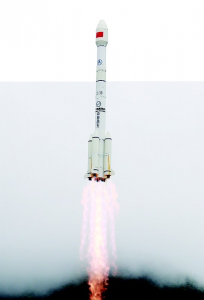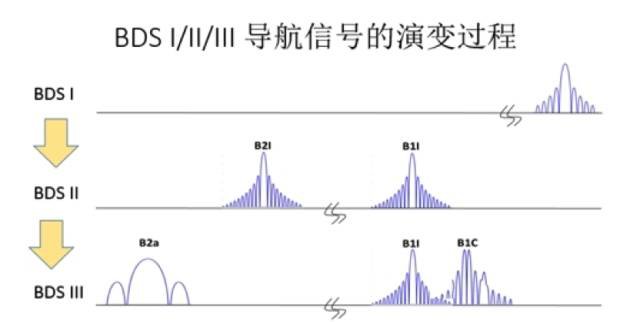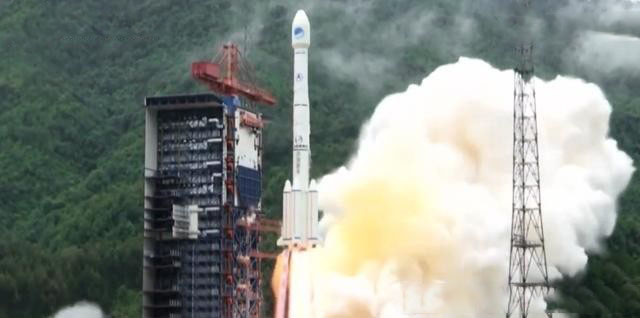Deployment and launch of the Beidou-3 satellite navigation system

Currently being deployed is Beidou III. At the beginning of last month, that is, on September 5, 2017, the official website of BeiDou released a news item of less than 200 words, attached to an 80-page document, which is the "BeiDou Satellite Navigation System Space Signal Interface Control Document Open Service Signal B1C, B2a (Test Version)". Although the release of this ICD is unusually low-profile, it is an important milestone in the history of the development of the BeiDou satellite navigation system, which not only unveils the official deployment of the BeiDou-3 system, but also finally unveils the BeiDou-3 navigation signals. According to this ICD00 beta version, we can learn some basic information about BeiDou 3, including constellation structure, navigation signals, service functions, etc., but the service performance has not yet been announced. The important information that has been made clear are:
(1) There are 30 working satellites in the BeiDou-3 constellation, including 3 GEOs, 3 IGSOs and 24 MEOs, and on-orbit backup satellites will be deployed as appropriate;
(2) The B1C and B2a signals are broadcast on the BeiDou-3 MEO satellites and IGSO satellites to provide public services;
(3) The B1C signal is a new signal, and the B2a signal will replace the B2I signal. the B1I signal is broadcast on all BeiDou 3 satellites to provide open service;
(4) GEO satellites will provide SBAS services.
It can be seen that BeiDou 3 will provide public service by at least three signals, i.e., B1C, B1I and B2a. The new navigation signals B1C and B2a will be compatible and interoperable with GPS and Galileo, which means that BeiDou 3 will be further integrated into the international GNSS family, and it will bring about a major change in satellite navigation receiver technology, and the future performance of the service will be greatly improved, and the power consumption and cost of user equipment will be significantly increased. The future service performance will be greatly improved, and the power consumption and cost of user equipment will be significantly reduced. In particular, it should be noted that

Around 2020, the modernization of GPS will enter the GPS III phase, the deployment of Galileo will be basically completed, and our BeiDou III will also be deployed. This means that even without counting the satellites of GLONASS, there are more than 90 satellites in orbit for BeiDou III and the three major systems of GPS and Galileo, and in addition to the six interoperable signals at the two frequency points of L1/E1/B1 and L5/E5a/B2a, which will become the mainstream, there will be other signals available to users. The global GNSS resources will be unprecedentedly abundant, especially in our country.
As the only interface between the satellite navigation system and the receiver, the satellite navigation signal is not only an important part of the satellite system, but also the link to build the whole satellite navigation industry chain from chips, boards, machines to various application solutions, and the carrier of various positioning, navigation and timing applications. Therefore, the satellite navigation signal has actually become the most important symbol of the upgrading of the satellite navigation system, and has even become an important symbol of the satellite navigation system.

BeiDou 3 will soon broadcast a brand new satellite navigation signal with advanced technology, excellent performance, excellent compatibility and interoperability with GPS and Galileo, and possesses independent intellectual property rights, representing the leading level of international GNSS, which not only lays a solid foundation for the deployment of BeiDou 3, the promotion of its applications and the sustainable development of China's satellite navigation industry, but also provides an important guarantee for BeiDou 3 to go global and become an international mainstream. It also provides an important guarantee for Beidou 3 to go global and become international mainstream.
With the deployment of the BeiDou-3 system and the launch of the new signal of BeiDou-3, China's satellite navigation technology, application and industry have finally ushered in an excellent opportunity to stand on the same starting line with the developed countries in Europe and America, and it will surely become an important milestone for China to catch up with the world's advanced level in the field of satellite navigation.
















